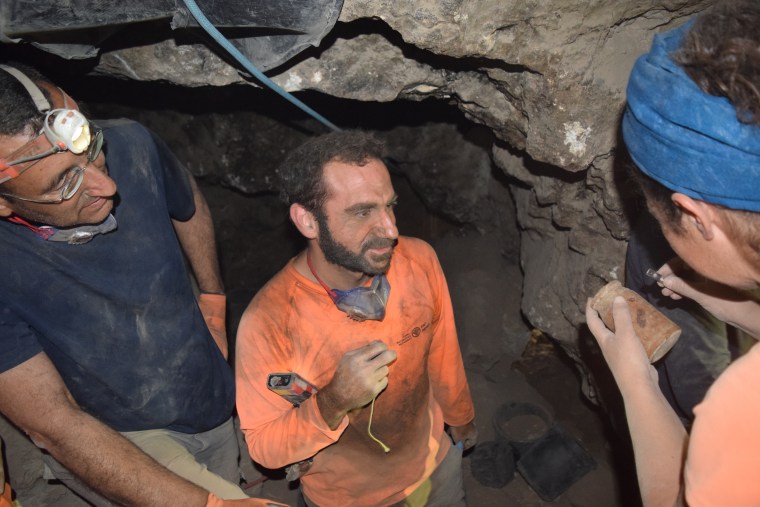The Maccabees revolted against the Seleucid king — Antiochus IV Epiphanes, referred to in Jewish sources as “The Wicked” — and his banning of Jewish practices.
The Seleucid Empire, covering large swaths of the Middle East and Central Asia, was one of several powers that succeeded the empire of Alexander the Great after his death in 323 B.C.
Eitan Klein, part of the team who studied the coins, said the discovery confirms the narrative that many fled the fighting and may have hidden their valuables.
“It is interesting to try to visualize the person who fled to the cave and hid his personal property here intending to return to collect it. The person was probably killed in the battles, and he did not return to collect his possessions that awaited almost 2,200 years until we retrieved it,” he said in a statement.
Klein described the find as “absolutely unique” and said it was the first archaeological evidence that the Judean Desert caves played an active role in the early days of the revolt, or the time just before it.

Historians disagree over various details of the revolt, including its root cause; the Maccabees’ recapturing of Jerusalem and the rededication of the Second Temple are the origin of the Jewish festival of Hanukkah, which begins Sunday.
According to tradition, a priest called Mattathias sparked the revolt in 167 by refusing to worship Greek gods, killing a Jew who tried to take his place then destroying an altar. He and his five sons then fled and went into hiding.
The Books of the Maccabees — which are not part of the Hebrew Bible but are considered canonical by Catholic and Orthodox Christians — describes Jews hiding in caves to escape repression.
“Then many who were seeking righteousness and justice went down to the wilderness to dwell there: they, their sons, their wives, and their cattle, because evils pressed heavily upon them,” the first Maccabees book says.
The box was made with a lathe and was packed with earth and stone, below which was a purple woolen cloth covering the coins. The impeccably well-preserved tetradrachm coins — large silver coins commonly used in the ancient Greek world — are from the reign of Ptolemy VI, who ruled Egypt at the same time Epiphanes, his uncle, ruled the Seleucid Empire, including Judea.
The three earliest coins were minted in 176 or 175 B.C., while the latest was made in 171 or 170 B.C.
Source: | This article originally belongs to Nbcnews.com










